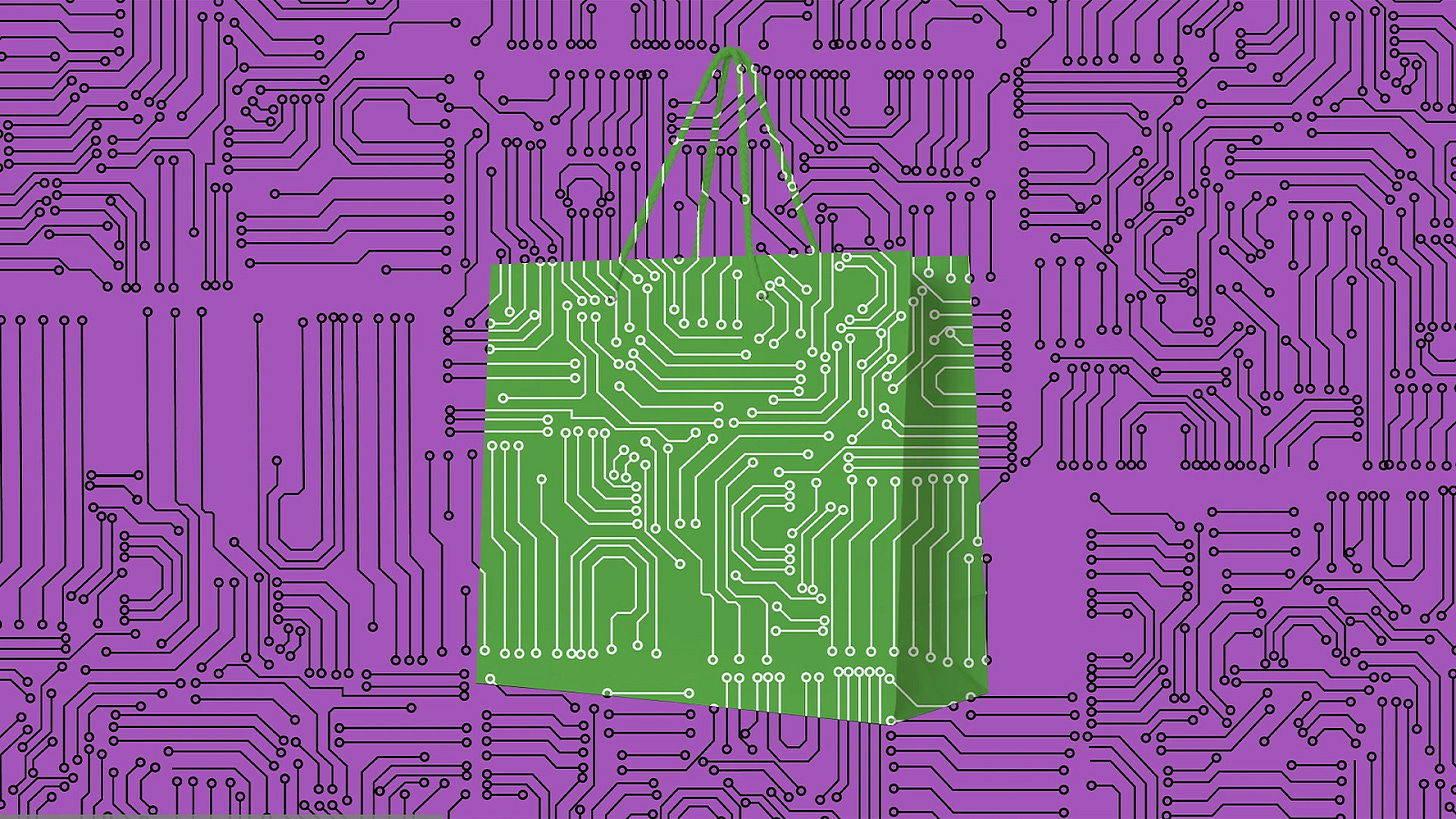The Decision Layer Steps Forward
Four stories showing how platforms are moving judgment, coordination, and control upstream
We’re watching the decision layer move out of the background and into the daily stack. Four stories this week help paint that picture. Restaurants are letting algorithms pre-score diners before they ever walk in. AI modeling is drifting away from giant systems toward smaller tools that sit closer to the task. Agents are becoming the front door for commerce. Music rights are reorganizing around who controls the training data, not who performs the song.
Each move is different, but they all point to the same thing: more judgment happening upstream, inside systems the user never sees. What used to be interface decisions are becoming infrastructure decisions. The outcome lands on people after the system has already made its call.
OpenTable quietly starts pre-scoring diners
Source: The Verge, November 17, 2025
OpenTable’s new AI-assisted diner tags show restaurants exactly how the platform wants guests interpreted. Not just booking history, but drink habits, spend levels, dining speed, cancellation patterns, and reviewer behavior. All of it pulled from cross-venue reservation data and participating POS systems. What arrives at the host stand is not a customer. It is a classification.
This is hospitality turning into a workflow. The platform maps preferences, establishes patterns, and sets expectations before anyone has said hello. Staff naturally anchor to these signals because they appear authoritative. And once the interface presents a label as authoritative, people follow its lead. That’s the shift that matters.
The logic mirrors what’s already normal in content feeds and ad targeting. A system decides first. A human reacts second. Restaurants are just adopting the same predictive frame.
Why it matters
Hospitality becomes part of the same decision infrastructure that already governs search, shopping, and media. The classification precedes the experience. And once a platform normalizes this behavior, every competitor has to follow or risk falling behind on “insight.”
Hugging Face says the bubble is in LLMs, not AI
Source: Ars Technica, November 19, 2025
Hugging Face CEO Clem Delangue argues that the excess isn’t in AI as a whole but specifically in general-purpose LLMs. The cost curves, compute budgets, and scaling assumptions have inflated expectations while starving other fields. Meanwhile, specialized models in video, audio, biology, chemistry, and industrial workflows continue compounding with far less noise.
The shift he’s pointing to is architectural. Instead of a single giant reasoning engine built to solve everything, the future looks like a constellation of small, narrow systems embedded directly in tasks. Many companies are already doing this quietly. The work that needs precision is moving away from monoliths and into fine-tuned modules.
If he’s right, the next correction won’t slow AI. It will redistribute where the energy flows.
Why it matters
Fragmentation isn’t a retreat. It’s what happens when scale, cost, and domain complexity start shaping the architecture instead of the hype cycle. The winner won’t be the biggest model. It will be the company that knows which model goes where, and why. This is the decision layer in modeling itself: matching the smallest tool to the most specific job.
Fetch launches a directory for two million AI agents
Source: Fast Company, November 19, 2025
Fetch introduced ASI:One for interacting with agents, a verification portal for brands, and the Agentverse directory housing more than two million action-capable agents. Each brand agent exposes structured functions: checking inventory, booking reservations, confirming prices, returning items, or surfacing policies. Costco, Adidas, Alaska Airlines, and Pepsi have already onboarded.
What Fetch is building looks less like a search engine and more like the control plane for commerce. Users won’t compare tabs or click through funnels. Personal AIs will negotiate with brand agents and assemble outcomes. The interface becomes orchestration, not navigation.
Early ecosystems like this tend to reshape incentives. Brands optimize for agent readability. Consumers anchor on delegation. And a new intermediary emerges, one that decides which agents are even allowed into the conversation.
Why it matters
This is the negotiation layer of the web forming in real time. The decision doesn’t happen on a webpage. It happens between agents. Whoever indexes and authorizes that environment becomes the new traffic broker.
Warner Music and Udio settle and launch a licensed AI music platform
Source: Reuters, November 19, 2025
Warner Music settled its dispute with Udio and announced a joint licensed AI music-creation platform scheduled for 2026. The system trains only on authorized catalogs, with revenue-sharing built in. Universal reached a similar settlement weeks earlier. Suno remains in active litigation, but the pressure is the same.
The consumer barrier is effectively gone. Ninety-seven percent of listeners cannot tell human-composed tracks from synthetic ones. The old argument to protect human creativity from machine mimicry holds far less strategic value when the audience cannot distinguish the output.
The new leverage moves upstream. To ownership. To rights metadata. To training access. The platform that controls the catalogs controls the next generation of music production.
Why it matters
This is the licensed-training economy taking shape. Creative distinction matters less than data governance. If models are good enough that listeners cannot tell, the differentiator becomes who has the legal right to train.
Closing Note
The decision layer is stepping out of the interface and settling deeper in the infrastructure below it. We’ve already watched this logic reshape media. Content becomes programmable the moment recommendation engines assemble feeds in real time. Now that same behavior shows up in other domains. OpenTable pre-scores diners. Models fracture into task-specific tools. Agents start to negotiate commerce. Music rights reorganize around training inputs instead of finished songs.
These moves happened independently, but they trace the same line. More data gets aggregated upstream. More signals feed into just-in-time decisions. The system prepares an outcome before the person arrives, and the interface presents that outcome as the natural next step. It feels seamless because the work already happened underneath.
That’s the shift to pay attention to. Systems are moving their decision points earlier. They’re operating with more autonomy. And they’re doing it in places where the logic is harder to see or examine, even though the effects are easy to feel. Once the decision layer moves upstream, it sets the boundaries for everything built on top. The interface reacts. The infrastructure shapes.
As this pattern spreads, alignment becomes the differentiator. Not scale. Not a spectacle. Alignment between the thing a company believes it’s building and the place where decisions are actually made.
We’re entering the part of the cycle where structure drives strategy. The next set of winners will be the teams that recognize where the decision layer now lives and design for it, turning the shift into an advantage.






The opentable update intrigues me. How long before the enable other restaurants to bid on customers that are making a reservation?